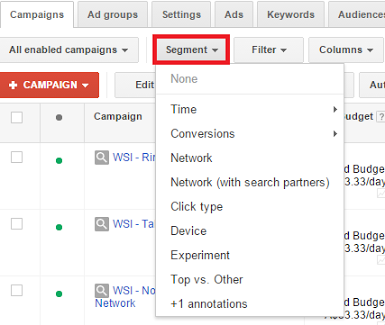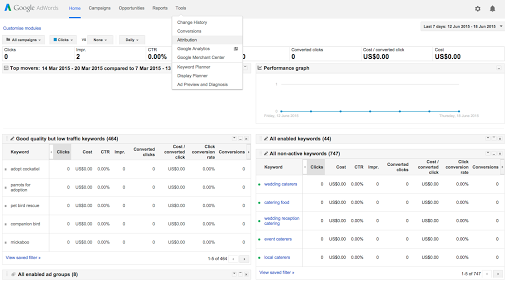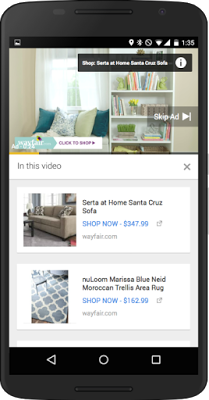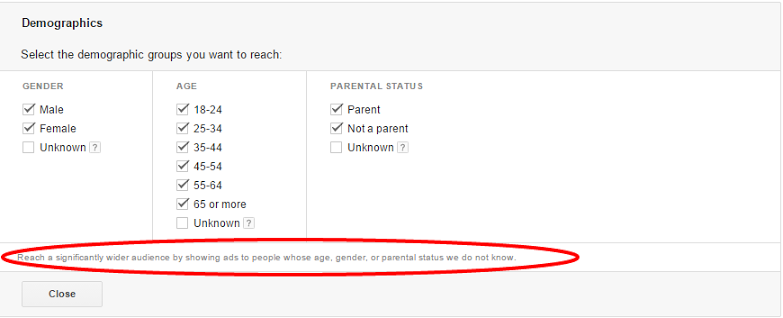|
If you’ve been involved with AdWords for at least a little while then there is a good chance that you’ve heard all the positive hype about mobile marketing. It’s less likely but you might also have heard negative feedback about the Search Partners network here and there. The truth is that I’ve personally had both great and terrible experiences with both of these areas across different accounts and you might be experiencing the same thing without even knowing it.
It’s very easy to get so tied up with other types of optimization that segmentation analysis can be forgotten at times which is a shame as it can help towards cutting costs dramatically or boosting total conversions even further within a campaign. The good news is that it really doesn’t take much time to review and can be accessed with ease. Simply navigate to a level of your account you wish to review (campaign, ad group or ads for example) and then click the Segment drop down button located below the Settings tab. You will be given a list of options to select from with the two mentioned being Network (with search partners) and *Device to review the difference between mobile and desktop traffic for example. If you have never done this for an account before I’d recommend setting your date range to All time and check the Search Partners performance at a campaign level, you might be pleasantly surprised or absolutely horrified with the results but at least you’ll be able to take action and save money moving forwards if your reaction was the latter. It really is worth performing these different segmentation checks now and then to review areas of the account which you might not consider usually. Over a series of five quick videos, Frederick will walk you through how to research and expand your keywords lists, how to use the Google keyword planner tool and how to customize and optimize keywords for maximizing campaign performance.
Academy Video links: Part 1: Building a keyword list http://goo.gl/8ZZDDc Part 2: How to use the keyword planner http://goo.gl/syHnYi Part 3: Customizing your keyword list http://goo.gl/BlCmFJ Part 4: Using the keyword planner results http://goo.gl/iATX1h Part 5: What is multiplying your keyword list? http://goo.gl/SdcydA Google recently released an infographic highlighting 3 tech trends that marketers should watch out for in 2015 – http://goo.gl/J6TL66. The red mobile section caught my eye in particular as it mentioned two very interesting points:
“Roughly 1 in 5 searches on Google are related to location.” “Searches for “nearby” have grown 5 times since 2011 as people look for what’s around them.” It can be easy at times to neglect location-specific keywords, but these insights are further evidence of why we shouldn’t forget to apply this good practice (in the appropriate circumstances). Not only does it provide you with the opportunity to capture additional traffic but at a rate of 1 in 5 searches being location-specific, it’s safe to say that this traffic is also going to be significantly relevant; just remember to include the location name in your ad copies to boost relevancy and CTR averages. The bigger surprise to me personally was the statistics based around the search “nearby”. With an incredible growth rate of 5 times in four years, this can be an additional source of traffic to tap into by expanding your keyword lists with the inclusion of the term. This is a great opportunity for physical service providers, especially when considering the ad extensions on offer to further attract these individuals. If you’re looking to boost relevant traffic or simply want to attract local customers then do your accounts a favor and check to see whether you have these location-specific search terms included in your keyword lists! Q. Does anyone have a good way to make sure that my exact, phrase, and broad match keywords (the same word different match type) are bid staggered? I want to make sure that my KW in multiple accounts are competing with themselves.
A. If you have multiple match types, make sure that you have exact match bid the highest, phrase match a little lower, modified broad even lower, and finally broad match at the lowest bid For those that don't know SKAGS, here you go. http://unbounce.com/ppc/doing-adwords-wrong-make-it-right/ Smart analysis and reporting in AdWords highlights what matters to you and your bottom line. That information can directly improve the performance of your account. This guide covers how to surface the right insights and turn those insights into action. We’ll talk about important considerations as you analyze your AdWords performance, and then we’ll cover how to turn your important analyses into truly special reports.
Frame analyses around what success looks like for you 1. Define clear and consistent success metrics. Read more Why: Without focusing on a clear goal it’s easy to get lost in the details. 2. Focus on insights that lead to changes that affect your success metrics. Read more Why: Understanding what’s happening in your account and why it may be happening is crucial to replicating successes and eliminating shortcomings. Give analyses the appropriate context 3. Detect anomalies in your account by being aware of baseline performance. Read more Why: The earlier you spot anomalies in your performance, the quicker you can take advantage of new opportunities or fix poor performers. 4. Choose the right time periods when analyzing performance. Read more Why: Context is important. Seasonality, strategy changes and external market pressures can influence performance. 5. Ensure that your ratios have the right amount of data to be legitimate. Read more Why: Early returns can be misleading. By waiting for enough data, you can be more confident that your changes are the right ones. Tell a story that translates reports into action 6. Filter your analyses and reports to focus on high-value areas. Read more Why: Appropriately placed filters can direct your attention to the details that will ultimately determine your success. 7. Segment your analyses and reports to highlight differences at every level of your account. Read more Why: Looking at your data at the top level may obscure important differences that segments can reveal. Find efficiencies to exploit and inefficiencies to improve. 8. Create line, bar and pie charts to better visualize your data. Read more Why: Pictures are often easier to comprehend than spreadsheets. Use charts to turn your data into a story that anyone can understand and act on. Tailor reports to be uniquely meaningful to your needs 9. Create custom columns that focus on what matters most. Read more Why: It’s easier to focus on performance drivers if your reports are customized to include specific metrics that you care about. 10. Save your important, recurring analyses as reports. Read more Why: Make it easy to repeatedly surface the insights that you find most valuable. Quality Score is normalized to compensate for performance differences resulting from ad position.8/1/2015
Quality Score measures how relevant your keywords are to users' search queries and influences CPCs and first page bids in your account. We'll be bringing you a short series of facts about Quality Score to help answer the questions we frequently receive, beginning with this one:
Showing up in a higher position will not benefit your Quality Score. Although higher-ranked ads may typically earn better clickthrough rates, Quality Score is normalized to compensate for performance differences resulting from ad position. I have to say that this is an absolutely, insanely detailed, fantastic article about query level bidding in Google Shopping.
It's scary to say that yes this is the traditional way that you would have to go about doing this. This kind of work can take weeks if not months to get through. To be able to scale this for the SMB and the Big Brand our agency had to build an entire Software Platform dedicated just to creating and managing Google Shopping campaigns. What is missing from this is the requirements of an ID level campaign and the tracking of transaction data from Analytics. With an ID level campaign tracking properly you can see which search terms sell exactly which products in a campaign. However, unless you are also factoring in Cost of Goods Sold as well as Ad Spend and measuring that against the margin of the merchant, bidding can still wreak havoc on the campaign. Click here to read the article Before pausing low converting keywords you will want to make sure and check out the click assisted conversion and last click conversion metrics within your AdWords reporting.
If you want to pause your low-converting keywords, you'd be wise to check each keyword's "Click-assisted conv. / last click conv." metric first. If the number is 2 or more, then there's a chance that these low converting keywords are actually contributing to conversions on other keywords. Low converting keywords may be assisting in the long term conversion and removing them may result in less overall conversions. Supporting Documentation: https://support.google.com/adwords/answer/1722023 I wanted to share a new video explaining Target and Bid VS Bid Only on the display network. It's geared more towards beginners, so if anyone knows anyone else that may benefit from it, please pass it along :) Did you know that U.S. Hispanics are considered ""super"" consumers on account of their fast-growing numbers and significant economic clout? Based on the facts contained within this Think with Google article, this is a market we should be keeping a close eye on. Here are some things to know about engaging this audience:
1. 83% use mobile in-store to inform purchasing decisions. 2. They use the internet 54% more than TV to gather information about purchases. 3. 70% of them say it's important for a website's content to be culturally relevant when they are gathering information about a purchase. So how can your clients make their content culturally relevant to U.S. digital Hispanics? Read on for five tips Complete - This is great course, if you haven't taken the time to better understand using the tool, now is a great time. I would suggest following the steps with your own accounts, just to better understand the implementation steps. You can go in and delete the setup after words but it will give you some hands on training, which I found helpful. If you find yourself stumped go to the community or course forum to get quick answers.
Tips: Open Course, AdWords, Analytics and Tag Manager When reviewing each video lesson right click the "View Transcript" and open each in their own new tab for reference. Specifics: Tag Manager and your website, Other Tags, Implementation, Metrics & Dimensions in GA, Containers, Container snippets, Tag Manager Account Basics, Triggers, Built in variables, Code location, Naming conventions, Property ID variables, Data Layers, Custom Dimensions, Push Method, Dynamic Values, Page view Tags, Custom Metrics, Event Triggers, URL Variables, Conversion tracking, Dynamic Remarketing, Browser Cookies, Help Center Links: Tag Manager Course: www.analyticsacademy.withgoogle.com Tag Manager Account: www.tagmanager.google.com AdWords: www.adwords.google.com Analytics: www.google.com/analytics Good Luck! The Inside AdWords blog has two mini case studies highlighting how small businesses can benefit from Google Shopping.
- Paper Culture used Google Shopping to showcase their unique designs in a highly visual and cost-effective way. They decreased their cost-per-lead by 50% and saw 3x ROI compared to their other digital channels. - PUBLIC Bikes was working with limited time and resources and turned to Google Shopping to help market their line of urban cycling products. They employed bidding by product and successfully turned once low-converting search terms into profit. http://goo.gl/aVevZf Question:
Is there an easy easy to see the analytics detail on a particular page on a site? We're trying to measure the traffic of a landing page. Answer #1 You can see some basics under the content pages http://searchenginewatch.com/sew/how-to/2340779/google-analytics-content-reports-understanding-the-key-benefits but if you use advanced segments you should be able to see all analytics as it ties to visits who enter thru that page. https://blog.kissmetrics.com/new-google-analytics-advanced-segments/ Answer #2 Go Behavior > Site Content > Landing Pages ... add the last part of page url to search box myfile.htm ... you can toggle your conversion goals also after. Answer #3 Just use the Page Analysis Chrome Toolbar Add-on. Join Googler +David Bos for an introduction to Google's products for app promotion across Search, Display, and YouTube, including tips and tricks for attaining maximum scale at your target cost per install. You have to get creative to stand out from the nine other advertisers you’re sharing real estate space with (or as few as four competitors if you’re on mobile). So how do you do it? I’m here to give you some proven tactics you can use to write AdWords ads that will bring you higher click-through rates, higher Quality Scores and higher conversion rates. Ready to have some fun? Let’s go! Whether it’s watching a product review or learning how to bake a soufflé, we look to video in countless moments throughout to the day to help us get things done. We call these micro-moments – when we reflexively turn to our devices to learn more, make a decision, or purchase a product. To connect the dots between the moment a person watches a video and the moment they decide to make a purchase, today we’re introducing a new feature called TrueView for shopping that makes it easy for viewers to get more information on your products and click to buy.
Question:
Hi! Curious to know your thoughts on programmatic ad buying. As far as I can tell, most of the programmatic companies also use the GDN and/or DoubleClick, along with a few other affiliates. (At least the ones that we've spoken with so far, I could be totally wrong here!) The only difference that I can see is that there is usually a fancy dashboard that makes it easier for client reporting. Do most of you do both, or do you prefer GDN? Are there any benefits to using a programmatic ad buying company of some sort? Answer: Our agency operates our own platform and prefers programmatic over the GDN. We do access inventory from GDN along with about 10 other ad networks. Even though we are paying CPM as opposed to CPC, we really like having the extra targeting and access to pretty much the entire internet. Plus, we don't have to worry about click bots and other fraudulent spend. Just follow this advice to leapfrog your agencies thinking to whole new levels on customer presentations and increase your sales several-fold.
AdWords tip of the week: Target and bid vs Bid only
The first time I was presented with these two options while creating a display network campaign I can confess that I was confused to say the least. I remember reading each description again and again until my brain simply refused to accept what they actually meant. Over the years I realised it wasn’t just a case of me not getting it, however, as I noticed that other advertisers also struggle to get their head around this aspect of display targeting at times. So how would I best explain it to those who are in the position I was in? Well let’s say that we have an ad group which contains both keywords and a single placement, example.com, as targeting methods. If we set both of these methods to Target and bid then our ads will only show on example.com pages which match our included keyword themes. The ads will not show outside of these two qualifying targeting factors while under a combination of these settings. If we changed the placement targeting to Bid only however then our ads have the opportunity to show across the entirety of example.com while also on other placements which match the keyword themes. If you therefore find that your display network traffic is limited at times then it’s worth checking to see which targeting options you have selected for your ad groups. I personally prefer to start a display campaign with the restricted Target and bid approach and then over time open it up to Bid only if required. This video teaches you how to measure your website traffic to understand your customers, improve your online business, and how you can set measurement goals that are right for your business and learn how to use data to make better business decisions. Run time is just under 20 minutes. Television attribution took a big leap forward with the integration of Google Search query data and Rentrak airings data. TV attribution integrates Google search query data and airings data to help marketers identify search "micro-conversions" to specific TV moments.
http://analytics.blogspot.ca/2015/04/introducing-search-response-and-airings.html Question
Can anyone set me clear on something. When I download an Adwords KW plan into my docs, I get a numeric competition number. What's the scale used here? Is 1.0 highest and it goes down from there? Answer it's basically a more accurate version of the "low", "medium" and "high" values you'll see in the interface. In this case higher values equate to higher competition and lower values equate to lower levels of competition. By now your family or neighbors have already put the seeds of guilt into your mind about the traditional act of spring cleaning. But what about your AdWords accounts, could they benefit from a similar sort of treatment?
We can get so used to managing campaigns on a daily, weekly, and monthly basis that we sometimes forget to analyze the longer periods of time and the results can be shocking. A keyword which accumulates a $10 cost every month without converting might not seem the end of the world, for example, but over a year’s period this can soon add up, especially when considering this can happen across a significant amount of keywords. So what actions can be taken to make sure your accounts are in check? Destination URLs It might seem unlikely that your destination URLs are now leading to 404 “page not found” errors but you’d be surprised at what your clients can get up to without you knowing. Now you might sigh at the thought of going through every single account and checking every single link but the team at Google Developers have provided us with an awesome script which will run through multiple accounts under an MCC. The idea of a script might also put you off but before you dismiss I’d suggest at least taking a look as it’s not as complicated to use as you imagine -http://goo.gl/52Pc2f Landing pages With page errors addressed we can now take a look to see whether the landing pages themselves are actually up to date. Some businesses will happily rely on the same designs and functionality for years and wonder why they aren't performing as well as they have done in the past. The truth is that quality in general improves on a regular basis meaning that if you don’t keep up with competitors then you’re going to be left behind. As an experienced advertiser you will know what works and what doesn't so be sure to pass this information onto your clients if you see issues with their landing pages; sometimes you have to be cruel to be kind. Duplicate keywords Hopefully you analyze and take action on the search term report on a regular enough basis that you won’t find any horrible surprises while analysing a longer period of time but it’s still worth taking a look just in case. What you might miss out on daily management however is duplicate keywords. Clients offer their own suggestions, we perform our own research and eventually we can add keywords to campaigns which we had already included from the very beginning. To quickly identify these duplicate keywords simply go to the View: drop down menu within AdWords Editor and select Duplicate keywords at a suitable level, you can then take action appropriately if duplicate keywords have indeed gathered over time. These are just a few ideas that might need a little bit of spring cleaning attention but I’d love to hear some of your own tips! Google writes a so-called warning: "Reach a significantly wider audience by showing ads to people whose age, gender, or parental status we do not know."
Um, I want a targeted audience, Google! |
Archives
December 2017
Categories
All
|




